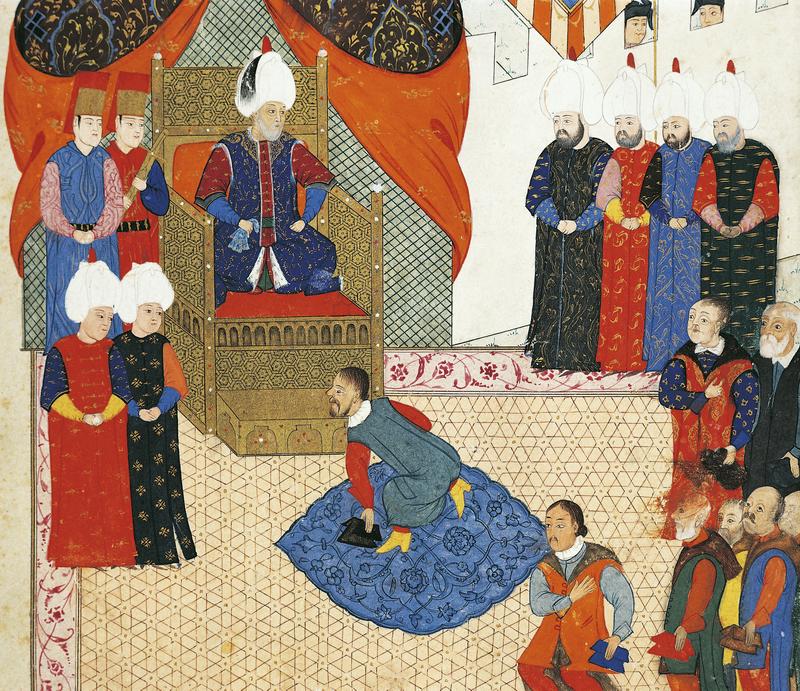Why Was Suleiman So Magnificent?
By | November 15, 2019

Of epithets applied to rulers “the Great” is usually the one given to exceptional monarchs. Yet there is one epithet which lends a more glamorous, fanciful air -- “the Magnificent.” There are only a handful of people who received the title and of these, the most well-known is the Ottoman ruler, Suleiman the Magnificent.
So how does one get to be Magnificent?

Suleiman (sometimes Süleyman) was the Sultan, or ruler of the Ottoman Empire which had come onto the scene first around the year 1299 in Anatolia. The Ottoman state expanded, conquered the last remnants of the old Eastern Roman Empire (Byzantine Empire) in 1453 and set up its capital in its former capital of Constantinople (today’s Istanbul). By the time of Suleiman’s birth to Sultan Selim I on November 6, 1494, the Ottoman Empire had expanded to dominate much of the eastern Mediterranean basin and southeast Europe.
Suleiman was schooled at the Topaki Palace in Constantinople before being appointed in various posts as a governor. After the death of his father, Suleiman ascended to the throne on September 30, 1520.

The young Sultan, ambitious to expand Ottoman power began a series of military campaigns into southeastern and central Europe. Ottoman military strength was at or near its peak during Suleiman’s reign. In 1521 Suleiman’s armies took Belgrade. By 1523 he had subdued the Knights of Saint John on Rhodes. In 1526 he broke the power of the Kingdom of Hungary throwing it into a civil war. He pushed on as far as Vienna, Austria laying it to a siege in 1529. This effort was rebuffed although some historians believe that Suleiman did not so much want to take the city as to demonstrate Ottoman power which he certainly did. Hungary was largely dominated by the Ottomans with the Hapsburgs of Austria controlling the western and northern portions.

At the same time, Suleiman launched campaigns on his eastern border against the Persians. In the course of his reign, he launched three campaigns against the Safavids between 1532 and 1555. This resulted in a decisive Ottoman victory and the empire gaining control of the lands to the east including much of modern-day Iraq. In most cases of his conquests, Suleiman typically gave generous terms for surrender. In the case of Knights of Saint John, he allowed them after their surrender to leave with their arms and religious icons on Ottoman ships. The people of Rhodes were given three years to decide if they wanted to remain under the Sultan’s rule or leave with Suleiman promising to convert no church into a mosque and to collect no taxes for five years. Most stayed.

Aside from military conquest, Suleiman was dedicated to the improvement of his empire. He commissioned the building of monumental architecture and public works, especially in Constantinople. Suleiman also oversaw a period in which the arts flourished in his empire. An able poet himself, Suleiman was a powerful patron of the arts.
Suleiman also consolidated a secular code of law that worked in tandem with the religious shariah law. As a result, Suleiman was called the “Lawgiver” by his own subjects -- though Western Europe always called him “the Magnificent.” He also reformed the tax system, making rates transparent and dependent on income. He also provided more tolerance for peoples of non-Muslim faiths in the Empire, denouncing blood libels against Jews and liberating Christian serfs. In addition, he also moved the Ottoman Empire more toward a meritocracy whereby civil servants were given positions based on ability rather than birth or wealth.
To understand the influence of Suleiman, one must consider that he even established an alliance with Francis I of France against the Hapsburgs. This was absolutely unprecedented. It was the first alliance between Muslim and Christian powers.

Suleiman had two consorts, Mahidevran and Hurrem Sultan who was best known as Roxalana. Roxalana’s career is worth noting. She was of Christian birth from eastern Europe in the area of modern-day Poland. At a young age, she was kidnapped and eventually ended up as a slave in the harem of Suleiman. However, her charismatic personality made the Sultan fall in love with her. He composed poetry for her:
Throne of my lonely niche, my wealth, my love, my moonlight.
My most sincere friend, my confidant, my very existence, my Sultan, my one and only love.
The most beautiful among the beautiful…
My springtime, my merry faced love, my daytime, my sweetheart, laughing leaf…
My plants, my sweet, my rose, the one only who does not distress me in this world…
My Constantinople, my Caraman, the earth of my Anatolia
My Badakhshan, my Baghdad and Khorasan
My woman of the beautiful hair, my love of the slanted brow, my love of eyes full of mischief…
I’ll sing your praises always
I, lover of the tormented heart, Muhibbi of the eyes full of tears, I am happy.”
They married in 1533 or 1534. She became a prime influencer in the Sultan’s court.

Suleiman’s succession was not so magnificent. Suleiman had four sons that reached adulthood. The nature of succession in the Ottoman Empire was frankly fratricidal. The eldest son, Mustafa, was a son of Mahidevran and Roxalana feared rightly that her own sons would be killed if Mustafa should ascend to the throne. The ensuing power struggles resulted in Suleiman having Mustafa killed and then the death of all of his other sons except Selim who would succeed Suleiman.
Suleiman the Magnificent died on September 6, 1566 while on campaign in Hungary. It is believed that his organs were buried in Hungary while his body was interred in Constantinople. Thus ended the reign of the most famous of the Ottoman sultans.

